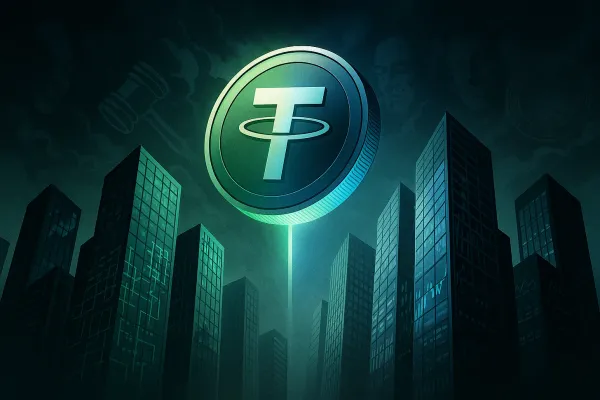Our 10X recap of Web3 in 2024

GM,
Happy New Year! We enjoyed a restful festive period here at SO WHAT and we are excited to be back. How excited you ask? Excited enough to 10X our annual recap, which includes 30 must-note topics from the year that was 2024.
Stand by for our predictions, which will drop next week.
Best,
Jon and Gary
What’s going on?
In recognition of a crazy year for Bitcoin and Web3, we decided to 10X our annual review. Typically we break topics down into three areas of analysis, but last year was remarkable in many ways and we want to reflect on the key topics that developed.
SO WHAT?
1. Bitcoin
Bitcoin is the star performer of cryptocurrencies, as we have consistently noted over the last year. Bitcoin looked outdated when Ethereum and Solana ushered in the era of developer-focused blockchains but Bitcoin has grown into its own as the front door to Web3. Last year, it added new features to enable NFTs and memecoins but the introduction of US ETFs marked its entry as a mainstream investment asset. Who could have predicted that when the Bitcoin whitepaper was released in October 2008.
2. Donald Trump
There’s a lot to say about Donald Trump, who added to his Web3 businesses with a new NFT collection and a DeFi project. But Trump’s election win and his proclamations in favour of Web3, including his apparent desire to buy Bitcoin with the federal reserve, got the market excited. The big question is whether he will deliver on his promises, or whether they were simply opportunistic pledges as part of his campaign.
3. Memecoins
Memecoins existed before 2024, but they came alive this year with viral tokens like WIF (dogwifhat), MOODENG (Moo Deng) and MEW (cat in a dogs world) bursting onto the scene and making traders millions of dollars. Even ‘older’ coins like Dogecoin and Pepe saw a resurgence.
4. New token launches
Speaking of new token launches, 2024 didn’t just open the door for memecoins, Web3 companies launched tokens thanks to more favorable market conditions. That’s including highly-anticipated launches including infrastructure like ZK Sync, Blast, Scroll and Movement, not to mention popular decentralized exchange Hyperlink.
5. Pudgy Penguins
Another major token launch was Pudgy Penguins, which released its token just before Christmas. The highly-anticipated launch sent the price of Pudgy Penguin NFTs skyrocketing to over $100,000 and, at the time of writing, it appears to have breathed new life into the struggling world of NFTs—time will tell.
6. ETFs
The introduction of ETFs (exchange traded funds) for Bitcoin and later Ethereum in the US opened the door to crypto for a lot of traditional retail investors. That promise sent the price of Bitcoin soaring, and there are plans for ETFs for other cryptocurrencies. The US launches also kicked off ETFs in other markets including Hong Kong.
7. Gary Gensler
All the while, though, the US SEC has cracked down on the Web3 industry consistently across this year. That included a massive $4.5 billion fine for Terraforma Labs (behind Terra/Luna), an ongoing case with Binance—which paid a $4.3B settlement to the US justice department—and ongoing action with companies including Coinbase, Opensea, Immutable, Crypto.com and others.
8. Pump.fun
The memecoin platform became one of the most significant Web3 companies this year after birthing memecoins including Moo Deng. Pump.fun’s daily revenue surpassed $1 million in the final months of the year, as memecoin trading became a universe all of its own within the broader Web3 galaxy.
Moodeng was the memecoin that brought Pump.fun to wider attention
9. Mt. Gox
From a new player to an old one, Mt. Gox became a headline name again after the trust overseeing the remaining funds of the defunct exchange began refunding customers impacted by its abrupt closure in 2014 following a string of hacks. The exchange lost 950,000 Bitcoin, a haul worth around $90 billion based on today’s prices.
10. Crypto media
A less publicized controversy of the year has been the purchase of two of Web3’s most influential media brands by companies operating in the industry. During the same month (November), Coindesk was purchased by Bullish, a crypto exchange run by long-standing crypto firm EOS, and rival The Block was sold to Foresight Ventures—the investment arm of crypto exchange Bitget. We asked if their integrity would be compromised, critics believe it has already.
11. Singapore vs Hong Kong
There’s a battle to be Asia’s regulatory center, and it is between Hong Kong and Singapore. Singapore had traditionally taken a slow road but this year it doubled the number of licenses awarded to overseas platforms, Bloomberg reported, with Hong Kong progressing more slowly. A number of platforms have even withdrawn applications in Hong Kong.
12. Solana
2024 completed an incredible resurgence for Solana, which was mocked and written off by critics when FTX, one of its major backers, went bust in 2022. But Solana low gas fees and fast transactions have made it the go-to blockchain for memecoins and payment solutions, despite concern around centralization.
13. Stablecoins
The growth of Bitcoin and general vibrancy of Web3 has seen stablecoins—tokens fixed to fiat currency—thrive this year. Tether is the biggest player and its CEO claims it is on track to book $10 billion in profit this year alone. Smaller rival Circle is widely reported to be planning an IPO in the US, its books will make for fascinating analysis when that listing comes around.
14. Ethereum
Ethereum remains the silver to Bitcoin’s gold and while it got major performance updates in 2024, it fell behind as other chains surged thanks to faster speeds and lower transaction costs. Solana, Base and TON saw stablecoin volumes surge and some are tipping them to overtake Ethereum, a change that would indicate significant activity on each chain.
15. Payments
There was once a gulf between traditional payments and banking and crypto, but today the gap is narrowing. PayPal introduced a stablecoin to help connect its payment systems with the Web3 world, Stripe added support for crypto last year and it spent over $1 billion to buy stablecoin firm Bridge, while Solana has actively made partnerships to bring off and on-ramping into its ecosystem. This trend will only accelerate in 2025.
16. Identity
Decentralized identification is beginning to become a major topic in itself. We wrote about an anonymous polling service based out of Ukraine but major players including Worldcoin and Humanity (disclaimer: a project that works with Terminal 3) are gathering steam. Worldcoin has caught the attention of regulators who are concerned, but there are also some countries that have teamed up with the startup that’s co-founded by OpenAI CEO Sam Altman.
17. AI
AI is the biggest topic in Web3 for developers. Protocols like Fetch.ai and Ocean Protocol are building the tools to enable AI systems, while open source projects like ElisaOS are making it easier than ever to create AI agents. With big names like Coinbase dabbling in AI-based transactions, this will be a breakthrough year for AI in Web3.
18. Airdrops
The start of the year began with a number of major airdrops, a marketing strategy that’s unique to Web3, sending users thousands, if not tens or hundreds of thousands of dollars of tokens. The number of airdrops slowed as the year progressed and fewer new tokens launched, but the topic came alive again when Pudgy Penguins launched its token in December.
19. Base
Coinbase’s Base has been one of the year’s success stories, catapulting itself to become one of the most important blockchain networks in Web3. While Coinbase hasn’t done anything unexpected with Base, it has grown thanks to low fees, fast transfers and a connection to millions of users. Base’s big challenge this year is to be more decentralized and grab a meaningful share of developer activity.
20. North Korea
Hackers linked to the North Korean government are estimated to have stolen $1.3 billion in cryptocurrency—astonishingly that’s more than half of the total of all hacks in 2024 and double what the state is said to have stolen the previous year. We wrote about how its attacks are growing in sophistication, and why Web3 is a fertile hunting ground.
21. Justin Sun
Justin Sun has long been a polarizing figure with his TRON blockchain and his purchase and repurposing of once-beloved streaming site BitTorrent. Last year, Sun divided the Web3 industry by becoming involved in wrapped BTC (WBTC) a crucial token for linking Web3 tokens and Bitcoin—but he returned to publicity stunts when he bought an artwork featuring a banana duct-taped to a wall for $6.2 million and promptly ate the fruit.
22. Telegram
Telegram doubled down on its focus on Web3 with the launch of its own blockchain-based payment system and support for decentralized apps. This spawned mini games that rapidly accrued millions of users and created new revenue sources. Telegram’s associated TON blockchain has been a core part of its business, accounting for most of its assets as we noted in an earlier newsletter.
23. Prediction markets
Web3 prediction markets flourished in 2024 as platforms like Polymarket and Augur saw increased use for forecasting elections, sports outcomes, and market trends. US-based users are blocked but have found ways to use them, particularly Polymarket, which is likely to attract regulatory attention this year.
24. Donald Trump
There’s a lot to say about Donald Trump, who added to his Web3 businesses with a new NFT collection and a DeFi project. But Trump’s election win and his proclamations in favour of Web3, including his apparent desire to buy Bitcoin with the federal reserve, got the market excited. The big question is whether he will deliver on his promises, or whether they were simply opportunistic pledges as part of his campaign .
25. MicroStrategy
Michael Saylor’s MicroStrategy continued its bold Bitcoin accumulation strategy, passing 250,000 BTC in reserves by year’s end. The company’s steadfast commitment to Bitcoin remains a beacon of institutional support for the cryptocurrency despite market volatility—the company entered the Nasdaq 100 but its share price is down some 30% since highs in November.
26. IPOs
IPOs are also becoming a talking point as the industry enjoys a renaissance on price. Japanese exchange Coincheck listed on the Nasdaq in December through a reverse merger, but there’s constant speculation that fellow exchanges Kraken and eToro are seeking to go public, too. This is a topic to watch in 2025!
27. Chain abstraction
A major theme in 2024 was chain abstraction, where users interact with blockchain applications without worrying about the underlying chain. That has to be the goal if blockchains are to onboard mainstream users and fulfil the potential of decentralized internet services. Solutions like LayerZero and Axelar made cross-chain interactions seamless, fueling a new wave of multi-chain applications.
28. Governments
From CBDCs (central bank digital currencies) to crypto tax regulations, governments worldwide grappled with how to integrate Web3 into traditional systems. Countries like El Salvador doubled down on Bitcoin, while others like India introduced stricter controls. Governments were also critical in impacting Bitcoin’s price, with Germany selling off $2.8 billion in BTC over the same—a figure that could have been much higher were it done later in the year.
29. Gaming
It was a mixed year for Web3 gaming. Total investment dropped 8% year-on-year to fall below $1 billion across 2024, but Telegram emerged as a new platform to reach the messaging app’s 950 million active users. Titles like Notcoin and Hamster Combat took its tap to play concept to millions of users, which parlayed into token launches. But the industry is still to see a landmark Web3 game outside of casual mini games and it isn’t clear if 2025 will change that.
30. USA
The US remains the largest market for crypto and Web3, but regulatory uncertainty continues to be a sore point. All of this could change in 2025 with the Trump Presidency offering a different voice around Web3—ETFs have already landed in the US, and the industry will be keeping a keen eye on whether Trump comes good on his talk.
News bytes
Do Kwon, the co-founder of Luna-Terra which lost investors as much as $40B, has finally been extradited to the US to face charges after Montenegro, where he is currently located, chose the US over South Korea
The FTX Europe business has been sold to Backpack, another crypto exchange, for $32.7 million—the deal includes licenses in Cyprus and Backpack will offer a full suite of crypto derivatives throughout the EU
President-elect Trump is reportedly planning to include crypto policy among the executive orders and directives that will be issued on his first day in office link
Binance had a tough year with a $4.3 billion dollar fine in the US and co-founder Changpeng Zhao sentenced to prison but the exchange said it grew to 250 million users, up nearly 50%—marking a new era of tighter compliance it said it doubled its institutional users and increased its compliance team to 650 employees
Bhutan has mined Bitcoin for a number of years but now it is adding Bitcoin, Ethereum and Binance’s BNB token to the strategic reserves of Gelephu Mindfulness City (GMC), its new Special Administration Region
That’s all for this week!
Share your feedback, questions or requests via email to: sowhat@terminal3.io




